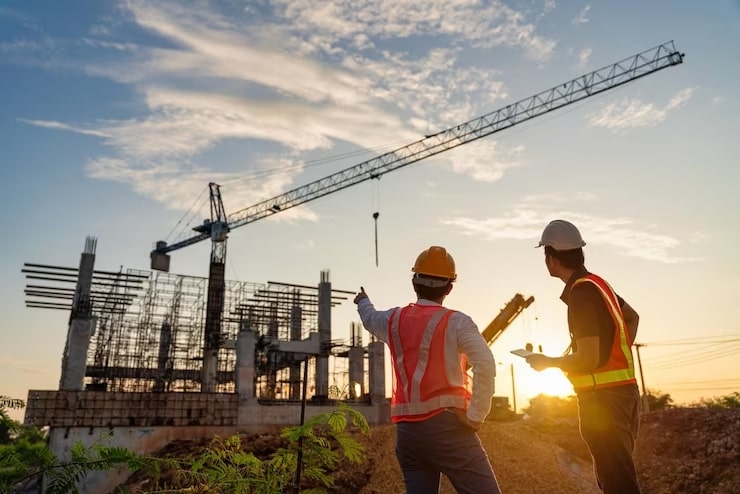Structural Engineering Services
Structural engineering is a critical discipline within civil engineering, focusing on the design, construction, and maintenance of structures that support or resist loads. It plays a pivotal role in ensuring the safety, stability, and durability of buildings, bridges, tunnels, and other infrastructure. Structural engineering services encompass a broad range of tasks, from conceptual design to detailed analysis, addressing the challenges of creating resilient and sustainable structures.
1. Design and Analysis
Structural engineering services begin with the design phase, where engineers collaborate with architects and developers to create structures that meet both aesthetic and functional requirements. The design process involves careful consideration of factors such as load-bearing capacity, material selection, environmental conditions, and safety regulations. Structural engineers use advanced software tools to model and simulate how structures will behave under various conditions, such as wind, seismic activity, and live loads.
In addition to the initial design, structural analysis is a key service provided by engineers. This involves examining the forces and stresses that a structure will experience throughout its lifespan. Engineers perform calculations to ensure that the structure can withstand these forces while remaining stable, safe, and durable. The analysis often includes evaluating factors like deflection, vibration, and structural integrity.
2. Material Selection and Optimization
Structural engineers play a crucial role in selecting the right materials for a project. Whether it's concrete, steel, timber, or composite materials, the choice of materials greatly affects the cost, strength, and sustainability of a structure. Engineers assess the properties of each material to ensure they are suitable for the project’s requirements. Additionally, they seek to optimize material usage, balancing strength and cost-efficiency. The proper selection of materials can also improve a structure’s resistance to natural disasters such as earthquakes, hurricanes, or floods.
3. Structural Inspection and Assessment
One of the vital structural engineering services is the inspection and assessment of existing structures. Whether for routine maintenance or after events like natural disasters, structural engineers conduct assessments to determine the safety and integrity of a building or infrastructure. They identify areas of potential weakness or damage, such as cracks, corrosion, or foundation issues, and recommend appropriate repair or reinforcement measures.
Structural assessments are essential for extending the lifespan of buildings and infrastructure. Regular inspections help prevent catastrophic failures and ensure compliance with safety standards and regulations. Engineers use both visual inspections and advanced techniques, such as non-destructive testing, to evaluate structural integrity.
4. Seismic and Wind Engineering
In regions prone to earthquakes or high winds, specialized structural engineering services are required to ensure that buildings and infrastructure can withstand these natural forces. Seismic engineering focuses on designing structures that can absorb and dissipate energy during an earthquake, reducing the risk of collapse or major damage. Similarly, wind engineering involves analyzing wind loads and designing buildings that can resist the effects of high winds and storms.
Engineers use sophisticated modeling techniques to simulate the effects of these forces on structures. They incorporate features like base isolators, shear walls, and dampers to enhance resilience against seismic activity. Wind-resistant designs often include aerodynamic shapes, reinforced connections, and bracing systems.
5. Retrofitting and Rehabilitation
As infrastructure ages, structural engineers are often called upon to retrofit or rehabilitate existing structures. Retrofitting involves modifying a structure to improve its performance, often to meet updated building codes or to enhance its resilience to natural disasters. Rehabilitation focuses on repairing or restoring a structure to its original condition. This service is especially important for heritage buildings, bridges, and other critical infrastructure that must remain functional and safe for long periods.
Retrofitting techniques may include reinforcing foundations, adding bracing or damping systems, or using carbon fiber wraps to strengthen beams and columns. Rehabilitation can involve extensive repairs, material replacement, or even partial reconstruction, depending on the severity of the damage.
6. Sustainable and Green Engineering
In recent years, the demand for sustainable and eco-friendly construction has grown significantly. Structural engineers are increasingly integrating green engineering principles into their designs. This includes using recycled or low-carbon materials, designing energy-efficient buildings, and ensuring that structures are adaptable to future environmental changes. Sustainable structural engineering services also focus on reducing the environmental impact of construction and enhancing the long-term resilience of buildings.
Conclusion
Structural engineering services are essential for ensuring the safety, stability, and sustainability of the built environment. From design and material selection to inspection and retrofitting, structural engineers play a critical role at every stage of a structure’s lifecycle. Their expertise helps prevent structural failures, enhances disaster resilience, and promotes sustainable construction practices. As urbanization continues and infrastructure ages, the importance of structural engineering services will only increase, making them a cornerstone of modern development.

